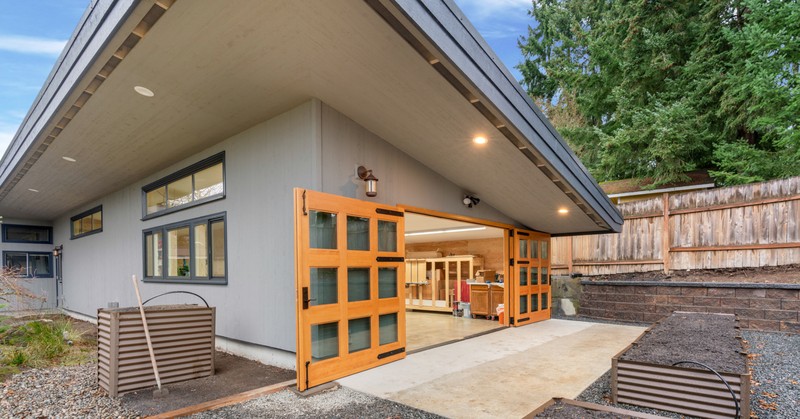4 Tips For An Addition That Blends Seamlessly With Your Home

Adding a room to an existing property is a wonderfully cost-effective way to create more space; helping homeowners avoid having to relocate because their home is no longer fit for purpose, or combat the risk of their home not selling because it can’t compete with bigger homes in the vicinity.
However, it isn’t always easy to integrate an addition into the existing architecture of your home, whether you plan to build upwards, or outwards, and professional guidance is often necessary.
To arm yourself with the necessary knowledge before seeking help from either an architect or a construction company with addition experience, here are 4 useful tips:
- Begin at the bottom
Having a strong foundation to your home is essential, and when planning an addition project, it’s vitally important that your homes’ floor and roof lines (or elevations) are matched.
You must also ensure that the foundation has enough depth to go below your geographic areas ‘frost depth.’ Constructing above the frost depth (which varies from region to region) can cause shifting of the addition independent of the main structure of the property, as the ground goes through the freeze/thaw cycle.
The foundation type must also be appropriate for your areas’ type of soil.
Most addition experts will tell you that the foundation type you use for your addition, should match the structures’ existing foundation, to ensure that the extra room or space, is robust, level, and seamless as it goes up from the ground.
- Match finishes on the existing exterior
Beginning with the roof and working your way down, ensure that your addition matches all details of the property, including such finishes as the trims, sidings, windows, doors, hardware and paint. This can prove more of a challenge for owners of historical homes, and an exact match might not always be possible.
That said, there are some design aspects that should always complement each other:
- The roof
Rooflines should be matched where possible, which might mean investing in a new roof if your existing one is old and in need of repair.
- Siding and other external finishes
Tying two structures together is much more effective if the siding color and trim style, match perfectly.
- Windows and doors
If you can’t find an exact match for your existing windows and doors, try to choose some that are harmonious with the existing style.
- Ensure interior designs are blended well
It’s just as important for a new room or section of your home, to feel as if it’s a part of the existing property when you walk into it, as it is when you see it from the outside. Try to blend your addition with the style you’ve chosen throughout your home, and where possible, match elements such as the color of paint used, style of light fixtures, window casings and crown molding.
- Get to grips with local zoning laws and building codes
If your addition is being constructed by an experienced, local company, you shouldn’t have to worry about compliance with local building codes and zoning laws, but it can be useful to educate yourself prior to beginning the project, so as to avoid disappointment, and to better plan the type of home addition you’re looking for. Restrictions such as not being able to build upwards, for instance, could mean you having to rethink the entire project, so best to be clear on things like this, right from the get-go.
By far the best way to ensure a seamlessly blended home addition, is to work with a local company who have dealt with such projects before, and who have a complete team of contractors ready and able to tackle every element of the project; this will save you a lot of potential stress, headache, time, and money in the long run.

